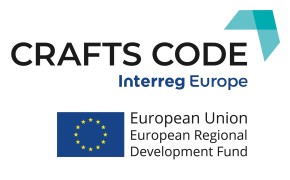Virtaa! brings art and culture to people who are not able to consume or attend it due to physical or psychological restrictions and creates a new delivery form.
Virtaa! brings art and culture to people who are not able to consume or attend it due to physical or psychological restrictions, and creates a new delivery forms of products/services of the cultural and creative sector in a practical manner to peoples’ homes. These can be any CCS (cultural and creative sectors) sector including handicraft. Virtaa! aims to increase the availability of and accessibility to art forms, and make the activity economically reasonable for both consumers and service providers. For example, cultural services were provided to elderly people using Alvar-visual phone service; creative writing session was conducted online for mental health rehabilitors.
As Virtaa! practice is delivered virtually, it also creates opportunities to exploit the method during the COVID-19 pandemic.
Resources needed
• 2 guides to deliver the service by following the instructions on the guide booklets
• Any resources mentioned on the guide booklets
• ITC equipment on both sides (entrepreneur and consumer)
• Work delivery tools (e.g. colours, yarn, knitting needles) on both sides (entrepreneurs and consumer).
Evidence of success
• Service delivery success: The method provided to the Municipality of Vaasa a good way to make art and art making (CCS) available to different target groups, which leads to an increase in skills and Vaasa is planning to develop other service models using the lessons learnt from this methodology.
• Artists/CCS providers learnt and obtained new ways to work in a cost-effective way and to bring own skills and competences to new target groups.
• General public got experiences to try new things.
Difficulties encountered
• Target group might have difficulties using the IT systems
• Internet connection
• Eye vision of the onscreen elements and hearing
• Animating participants and balancing overly silent and active participants
• Access to needed equipment
• Creativity to finding ways to servitise art
Potential for learning or transfer
This is a good practice as it can provide new avenues for craftspeople to deliver their services, e.g. teaching craft online, to any markets and hence finding new customers, to re-productise and servitise own activity, and at the same time to increase well-being of the general public/service consumers.
It enables access to new markets and target groups in general, but especially during difficult times, such as the social confinement caused by the COVID-19 pandemic. The practice is applicable in any country, depending on the IT levels of users (providers and receivers).
Tags: Accessibility, Art, Cultural, Digital, Innovation, SME, Technology








